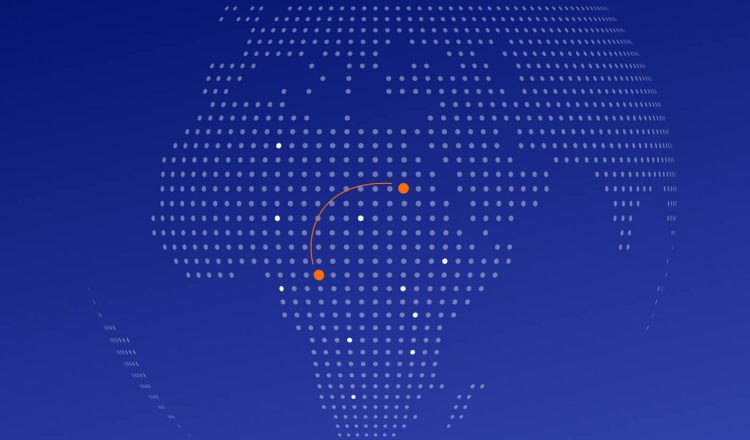From Jungle to Backbone: The Rise of African Fintech as Critical Infrastructure

For years, African fintech was described in headlines with an air of novelty – colorful metaphors of leapfrogging, underdogs, or “the next big thing.” But by 2025, the industry has matured beyond hype. It is no longer an experiment or a series of promising pilots. It has become infrastructure: the invisible yet indispensable backbone holding together commerce, livelihoods, and cross-border connectivity.
The narrative is shifting. What was once an unruly jungle of startups is now a critical layer of Africa’s economic architecture. Payment systems, mobile money platforms, lending APIs, compliance engines, and settlement rails now form an integrated mesh that banks, telcos, e-commerce platforms, and governments cannot function without.
This transformation is not about flashy consumer apps alone – it is about the invisible scaffolding that allows those apps to exist at all.
Mobile Money’s Transition from Product to Utility
Mobile money was once treated as a service, a discrete product offered by telcos or financial service providers. In its early days, its value was measured by how many wallets were opened or how many transactions were processed.
Today, mobile money is no longer just a product. It is a utility, comparable to electricity or water in its economic importance. In many countries, mobile money penetration outpaces bank account ownership. But more crucially, it underpins day-to-day business operations. Salaries are disbursed, farmers are paid, transport operators collect fares, and governments deliver aid – all via mobile-based transactions.
The infrastructure behind these systems has had to evolve rapidly to keep up. It’s no longer enough to provide a simple transfer mechanism. Systems must be interoperable across borders, compliant with tightening regulatory frameworks, resilient under heavy transaction volumes, and trustworthy to both enterprises and consumers.
The Rise of Fintech as Infrastructure
African fintech is moving into the domain of what infrastructure economists call general-purpose technology. These are not just optional tools but foundations upon which other industries build.
Consider:
- Agriculture now relies on digital payments to connect smallholder farmers with urban markets.
- Logistics platforms use fintech rails for instant settlements between drivers, warehouses, and merchants.
- Mobile wallets distribute donor funds, and healthcare providers accept mobile payments for consultations.
- Education platforms depend on micro-payments and subscription models powered by fintech APIs.
This web of reliance shifts fintech from being “just another sector” to being the connective tissue of Africa’s digital economy.
The Hidden Layer: Players Like Unipesa
Behind the consumer-facing stories lies a quieter revolution: companies building the “pipes and plumbing” of Africa’s fintech economy.
Unipesa is one such player. While not a household name like the big consumer apps, its role is crucial. Unipesa provides the infrastructure that enables fintech startups, banks, and enterprises to integrate payments, manage compliance, and scale across borders.
Think of it as the digital equivalent of power lines or fiber-optic cables. Consumers may never see Unipesa directly, but they feel its impact every time a transaction clears seamlessly, every time a fintech app scales without collapsing under the weight of new users, or every time a cross-border transfer complies with multiple jurisdictions’ regulations.
Where early mobile money providers solved the problem of peer-to-peer transfers, Unipesa solves the more complex problems of scalability, interoperability, and institutional adoption. It is part of the backbone making Africa’s fintech story sustainable rather than fragile.
Regulatory Pressure and Compliance Infrastructure
As African regulators strengthen oversight, compliance is no longer optional.
This is where infrastructure providers step in. Instead of each fintech startup reinventing the wheel, platforms like Unipesa offer built-in compliance rails. They allow innovation without recklessness, enabling fintechs to meet regulatory obligations while focusing on user experience and product-market fit.
By embedding compliance into the infrastructure layer, the entire ecosystem becomes more resilient. Startups scale faster, regulators gain transparency, and consumers build trust.
Cross-Border Trade and Settlement Challenges
Africa’s fintech revolution cannot remain confined to national borders. The African Continental Free Trade Area (AfCFTA) is accelerating the need for seamless cross-border trade. Yet settlement across 54 fragmented regulatory environments is daunting.
Infrastructure players are tackling this. Unipesa, for instance, focuses on simplifying cross-border payments, harmonizing compliance checks, and ensuring liquidity across corridors. This turns what was once a major friction point into a growth opportunity – especially for SMEs who trade regionally but cannot afford complex banking arrangements.
By abstracting away these complexities, infrastructure providers make regional trade not only possible but practical at scale.
Why Infrastructure Players Stay Quiet
Consumer-facing fintechs often dominate headlines because their apps are visible and relatable. But infrastructure players rarely receive equal attention. Their value lies in invisibility: the fewer problems users encounter, the better they are doing their job.
This quiet role does not diminish their impact. In fact, it amplifies it. The true test of an ecosystem’s maturity is whether it has robust, scalable, and reliable infrastructure behind the scenes. Without it, consumer apps would collapse under regulatory strain, technical failures, or fragmented integrations.
Unipesa exemplifies this hidden influence. It thrives not by being flashy but by being indispensable. Its customers are not just end-users but entire fintech companies, banks, and enterprises that depend on its reliability to serve millions.
The Next Phase: Fintech as Critical Infrastructure
Looking ahead, African fintech will be increasingly treated as national infrastructure. Governments are beginning to consider payment systems alongside roads, ports, and power grids in terms of strategic importance.
This recognition carries both opportunities and responsibilities. On one hand, fintech players will have access to larger institutional contracts, public-private partnerships, and deeper integration into national economic planning. On the other, they will face stricter demands for resilience, redundancy, and security.
Unipesa and similar infrastructure providers are positioned at the center of this shift. Their platforms are not optional add-ons but critical systems that need to be robust, secure, and interoperable at a continental scale.
Beyond Payments: The Infrastructure Opportunity
While payments remain the anchor use case, the infrastructure layer is expanding into:
- Credit scoring through alternative data pipelines.
- Insurance distribution via embedded finance channels.
- Remittances linked directly to mobile wallets.
- Compliance automation that reduces institutional risk.
Each of these extensions relies on core infrastructure. Without settlement engines, compliance modules, and integration APIs, the next generation of African fintech products cannot exist.
Unipesa’s strategy reflects this trajectory – moving beyond payments into building the connective tissue for all forms of financial services.
Conclusion: From Jungle to Backbone
African fintech is no longer the experimental jungle it was a decade ago. It has become backbone infrastructure: the essential rails that support economies, livelihoods, and cross-border trade.
The story of this transformation is not just about visible consumer brands but about the unseen infrastructure players. Companies like Unipesa are critical precisely because they do not chase the spotlight. They build, maintain, and secure the foundations upon which the continent’s digital economy stands.
As the next five years unfold, Africa’s fintech will be judged not by its novelty but by its reliability. And in that story, infrastructure players will be the quiet powerhouses ensuring that the backbone remains strong.



